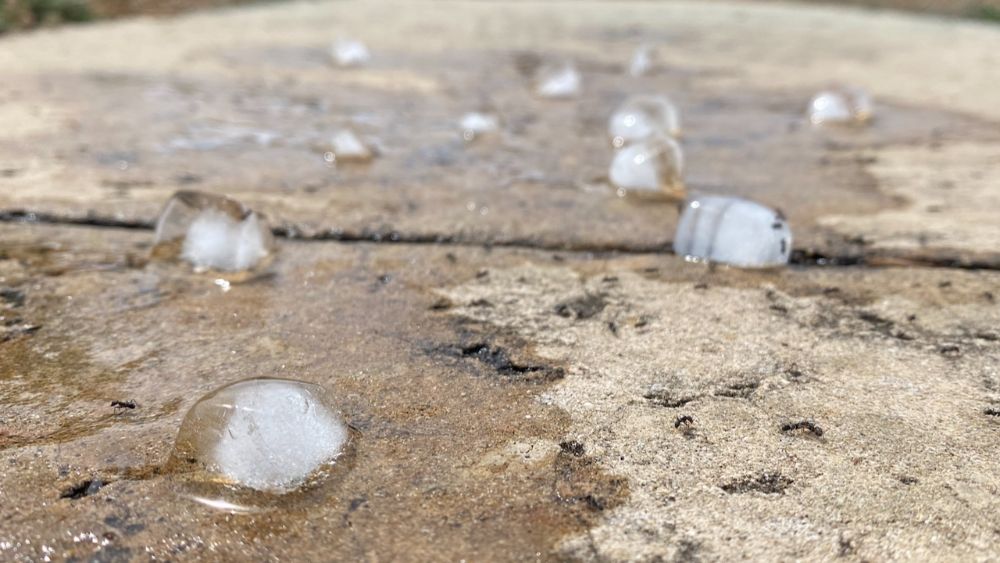We all know that you can melt ice quickly by applying heat to it in the form of sunlight, hot water or some other heating element. But what if you want to melt ice in colder temperatures and you don't have access to a source of heat. How can you melt ice without heat?
The chemistry of these methods is unique but will melt ice faster than allowing it to sit at room temperature without any interference.
If you don’t have access to a heating element or the surface of the ice is too large, these tips will work for you. I will explain each item on the list and how they melt ice.
1. Place The Ice On Aluminum or Copper
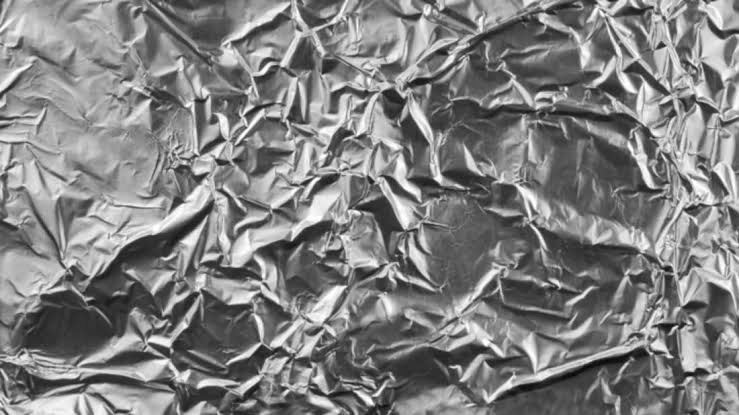
Aluminum and copper and 2 of the most conductive materials around. What this means is that they quickly absorb and distribute heat through conduction.
Ice will melt faster on aluminum than plastic due to the fact that aluminum can transfer its heat into the ice extremely quickly, whereas plastic cannot. The conductivity of aluminum is also how Japanese ice presses work to create ice spheres.
If you don't have access to something hot then simply placing your ice on a plate or aluminum or copper that has been left at room temperature will causes the ice to melt faster than it otherwise would.
Aluminum foil isn't quite dense enough to work effectively to melt ice so you'll want a thicker piece of aluminum if you have it available. Wrapping ice in aluminum foil will actually cause it to melt slower due to the heat reflective properties of aluminum counteracting its high conductivity.
2. Add Water to the Ice
Water conducts heat 23x more effectively than air does, so even if the water is slightly colder than the air around you chances are it'll still melt your ice faster than just leaving the ice out to melt. To keep ice longer it's actually better to drain your cooler rather than leave the water in…which feels counter intuitive.
The water doesn't have to be hot in order to work, it just needs to be above freezing temperature. So any room temperature water will do the trick.
Eventually the water and ice will form an equilibrium at 0ºC/32ºF and the water won't melt the ice very quickly at all. So to make your ice melt faster pour out the water once it cools down and replace with more room temperature water.
3. Aim a Fan At the Ice

Surprisingly, a fan does not produce cold air – the reason a fan cools us down is because the air causes the sweat on our bodies to evaporate which makes us colder. The fan is actually blowing room temperature air at us.
If you've ever tried to dry a wetsuit quickly (or any type of wet clothing) then you'll know pointing a fan at it causes it to dry faster.
The same is also true for ice. Pointing a fan at ice will causes it to both melt faster and (interestingly) stay colder in the process.
See ice has a small liquid layer of water on top of it that you often can't see.
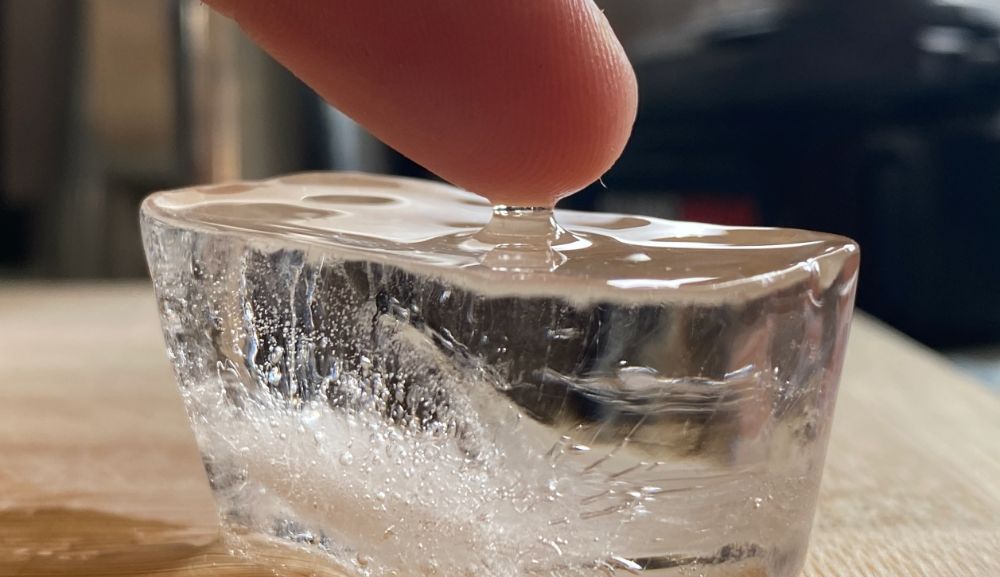
As the fan blows over the ice it'll cause this layer of water to evaporate more quickly. A new layer of water will then form which will then evaporate again and so on, speeding up how fast the ice melts.
4. Break the Ice Into Smaller Pieces

A larger block of ice will take longer to melt than a small block of ice. Provided the air around the ice is above 32 ℉ (0 ℃), the ice will melt faster into smaller pieces. Breaking the ice into smaller blocks increases the surface area of the ice which drastically speeds up how fast it'll melt.
The increased surface area allows warm air to reach more of the ice at one time, and the greater the surface area, the faster the melting process.
You can break the ice into smaller pieces and implement any of the other suggestions listed. The increased surface area will allow for better heat conduction from any additive you choose.
5. Cover Ice In Salt
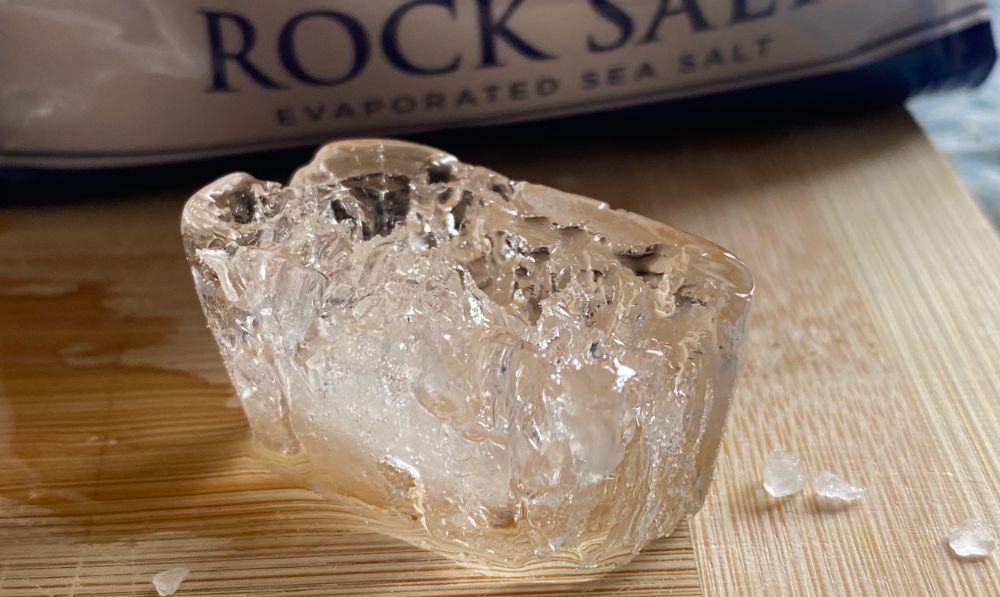
Salt is commonly used for roads when the ice and snow make it too slippery to drive safely. Table salt consists of sodium (Na) and chloride (Cl), a chemical solvent.
This is the most common way people melt ice outside without using any heat and all and it's perfect if outside temperatures remain below 0ºC/32ºF and you still need to melt ice anyway.
Sodium chloride reduces water's freezing point, which inhibits ice from forming. The sodium chloride (NaCl) interferes with the structure of the ice, which causes the ice to break up and melt at outside temperatures above freezing. Read more on why salt melts ice.
There are also ways to melt ice without salt that use different ingredients such a vinegar, sugar, magnesium chloride or calcium chloride. Some of these work even better that regular table salt and some aren't quite as effective but are better on your concrete, plants and pets.
6. Submerge the Ice in Bleach
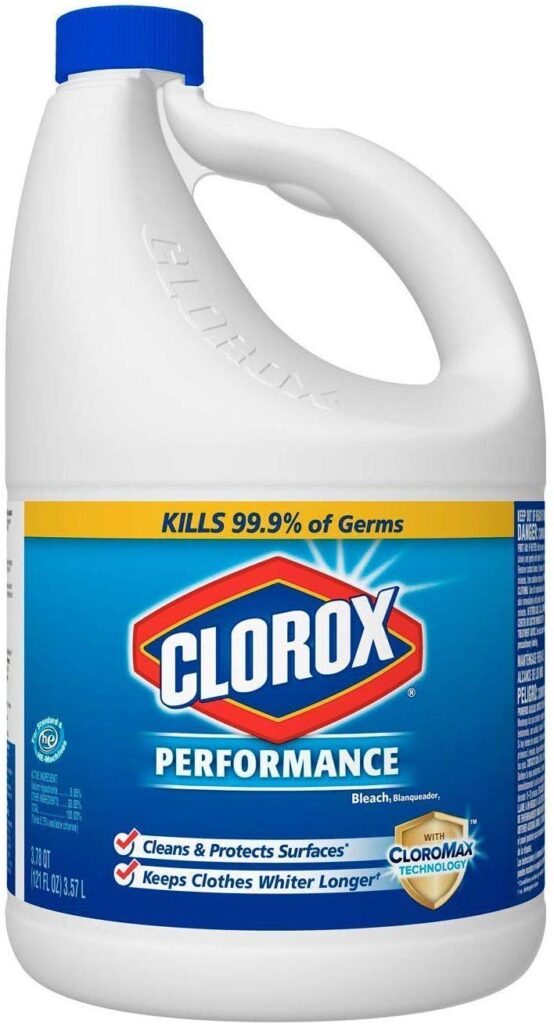
Not the most “natural way” to melt ice but it does actually work.
Bleach creates a lower freezing point, preventing water from turning into ice. This option is helpful because as the ice melts, it will not refreeze, allowing the ambient air above freezing to melt the ice.
You need to take caution with this method as higher volumes of bleach can be harmful to you and the surfaces you use it on. The element chlorine (Cl) found in bleach will turn into a gas as the liquid evaporates, which is toxic and can cause respiratory issues.
Bleach contact with the skin can also cause symptoms of itching or burning, so be sure to use gloves if you are trying to melt the ice with bleach.
Also, be incredibly careful using bleach to melt ice that will runoff into a reservoir or flowing body of water. Bleach can be harmful to plants, animals, and humans who consume the water.
7. Pour Rubbing Alcohol Over the Ice
Rubbing alcohol is commonly found in most households and is a mixture of isopropyl alcohol and water.
Isopropyl alcohol (C3H8O) is a carbon, hydrogen, and oxygen compound, which allows a freezing point of -120 ℉ (-84.4 ℃). Much like salt and bleach, the lower freezing point impedes ice's ability to refreeze, thus allowing the ambient air to melt the ice.
For the same reason that your vodka doesn't freeze when placed in the freezer, rubbing alcohol can stop your ice from melting.
Use caution when applying large quantities of rubbing alcohol to ice on surfaces such as a sidewalk or a driveway. As the ice melts, the area will become slippery, and you risk falling.
Below you can see someone using a mixture of rubbing alcohol, dish soap and water to melt ice on their front steps. As you can see it works quite effectively:
Why Would You Need To Melt Ice?
You would need to melt ice if you’re defrosting a freezer or ice formed around something in the winter, such as a shovel or a tire. You also might need to melt ice that is leftover from a party. Household products like bleach lower the freezing point of water, preventing it from refreezing.
However, you’ll want to be careful when using bleach to melt the ice around food, as this could seep into the package and render the food inedible. It’s better to use salt instead of bleach for this application.

